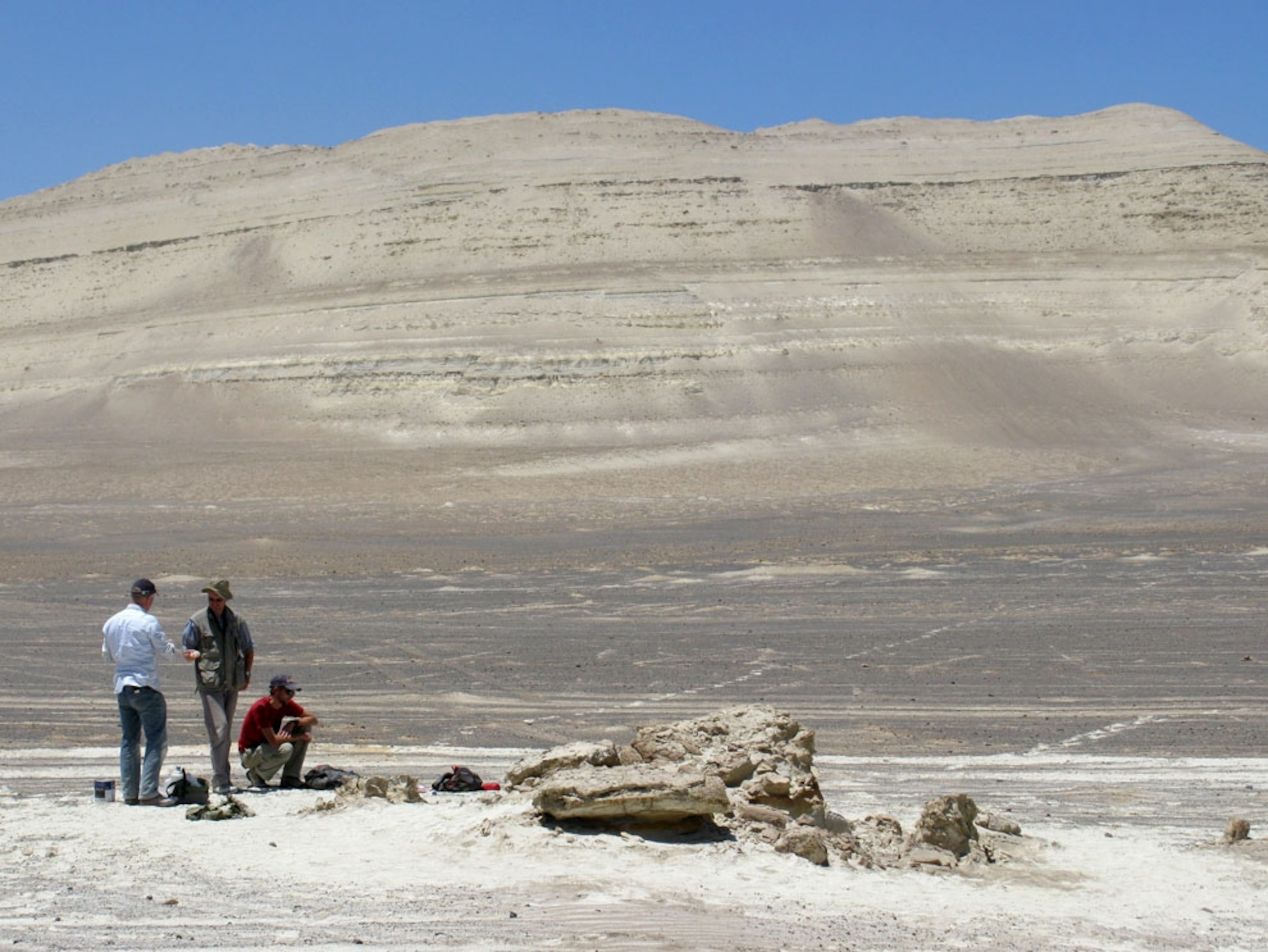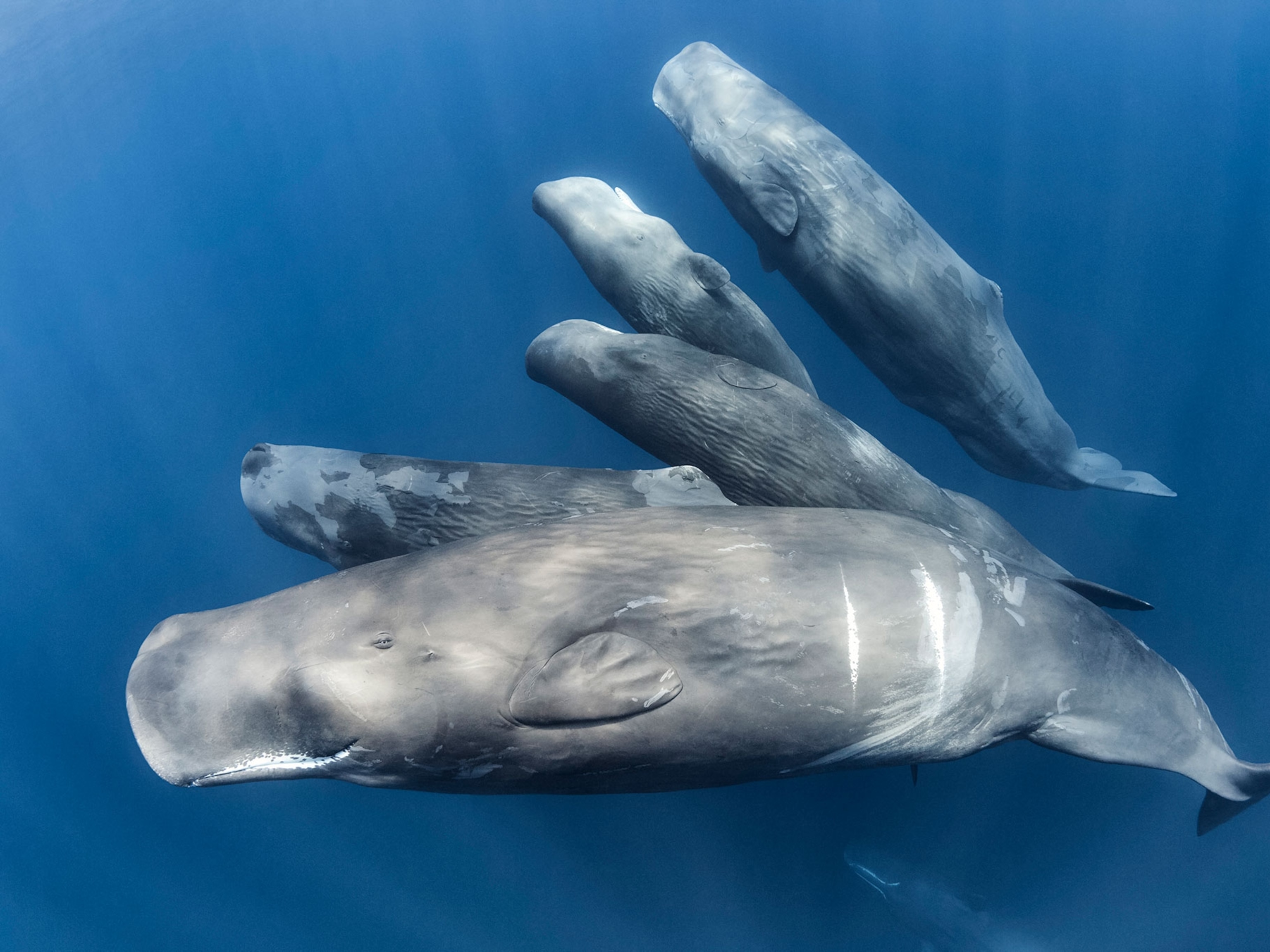New Leviathan Whale AttacksEvoking the poster for the original summer blockbuster, a new species of killer sperm whale attacks a baleen whale in an illustration.Dubbed Leviathan melvillei—an homage to Moby-Dick author Herman Melville—the recently unearthed fossil sea monster lived about 13 million years ago in waters atop what's now a Peruvian desert, according to a study published by the journal Nature on Wednesday.Living alongside the largest sharks ever known, the raptorial—meaning actively hunting—whale measured about 60 feet (18 meters) in length, about as big as a modern male sperm whale.But whereas modern sperm whales feed primarily on squid, Leviathan's large teeth—some of which measured more than a foot (36 centimeters) long—suggest the whale hunted more challenging prey, including perhaps its close whale relatives."It was probably a very powerful and frightening animal, so it fits well with the description Melville made of Moby-Dick," said lead study author Olivier Lambert, a paleontologist at the National Museum of Natural History in Paris.(Related picture: "Whale Found in Egypt Desert.")—Ker Than Illustration by C. Letenneur, Muséum National d'Histoire Naturelle, Paris, France









